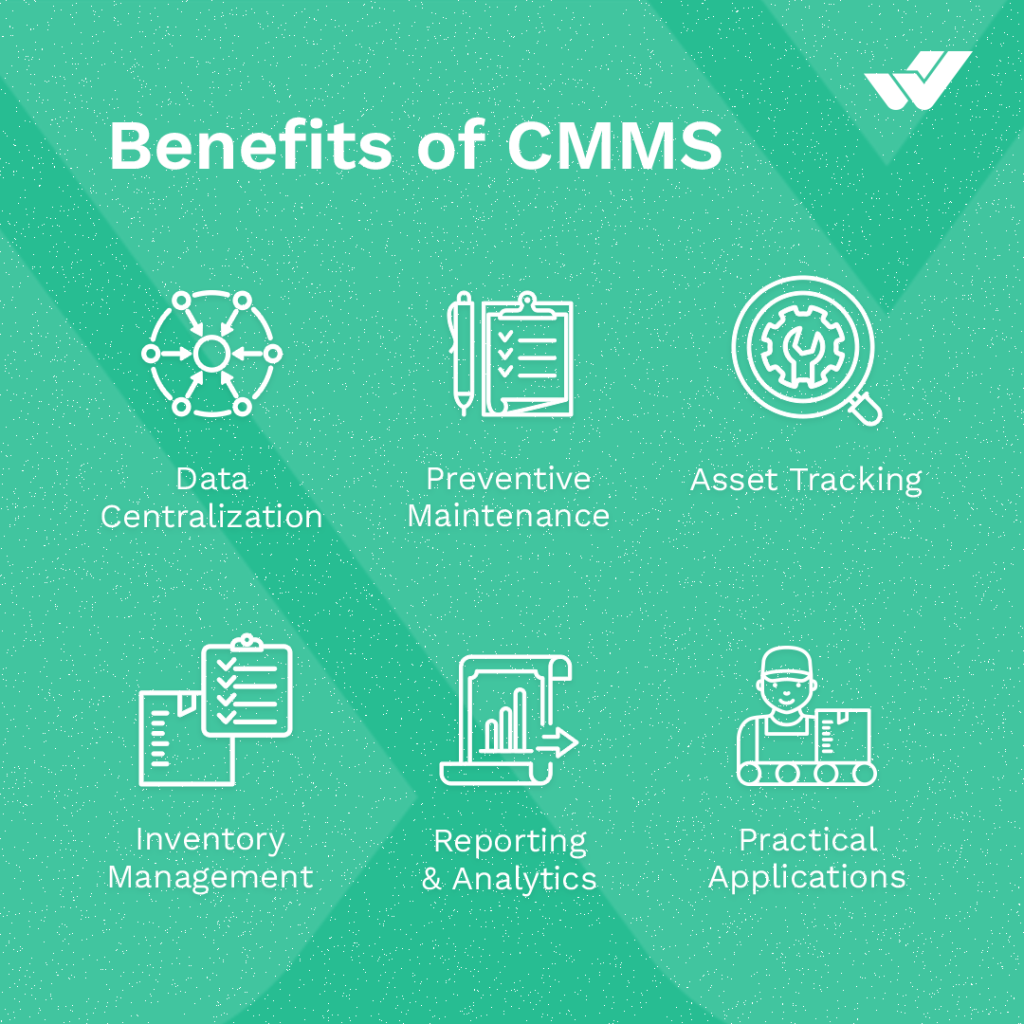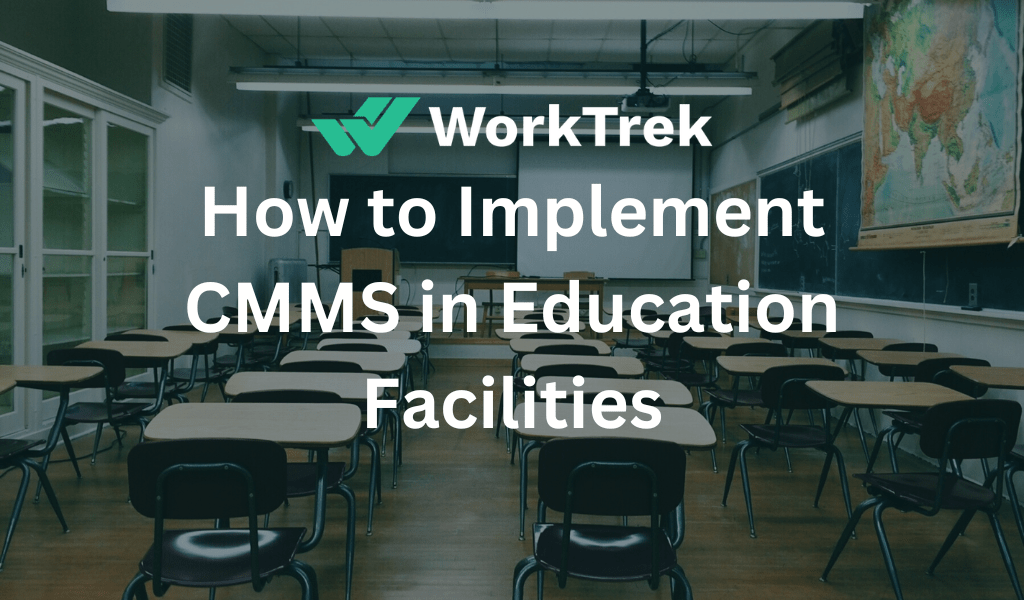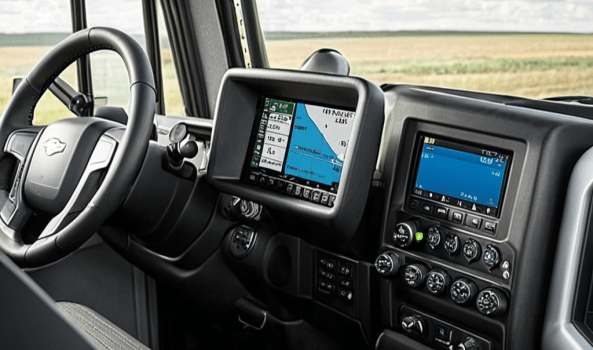Get a Free WorkTrek Demo
Let's show you how WorkTrek can help you optimize your maintenance operation.
Try for freeIntroduction
In today’s rapidly changing world, educational institutions face numerous challenges in effectively managing their operations. From maintaining facilities and equipment to ensuring the smooth functioning of administrative processes, educational institutions need effective systems to streamline their operations. This is where a Computerized Maintenance Management System (CMMS) comes into play.
What is a CMMS?
The acronym CMMS stands for Computerized Maintenance Management System. This software package was designed to manage maintenance practices globally, on a strategic, financial, and operational level. It is today the essential software of the industrial sector. Much more than simple computer programming, it is an assistant for maintenance teams, the cornerstone of industrial efficiency.

What is the Use of CMMS School Maintenance Software?
Whether it’s an elementary school with hundreds of students or a college campus with thousands of students, educational institutions are subject to daily wear and tear. Facilities must be maintained to ensure they remain functional day in and day out. CMMS software helps maintenance and support staff meet these emerging demands, minimizing downtime and ensuring resources are always available to those who need them.

Digitalize your maintenance with WorkTrek CMMS!
Book a WorkTrek demo to see how a CMMS can help you.
Try for freeThe CMMS platform acts as a single point of contact and organization for support tickets and routine maintenance tasks. When a teacher submits an IT support ticket to repair a projector or a custodial staff needs to replace a classroom’s recycling bin, these tasks are queued in the CMMS where they are sorted, processed, and ultimately completed. The system itself ensures that services are assigned to the correct person, billed to the correct cost center, and documented accordingly.

Advantages of CMMS for Education Facilities
The CMMS platform is a central management system for comprehensive maintenance and repair tasks in educational institutions. Therefore, it is also the best place to find cost-saving opportunities, efficient maintenance methods, and data to improve maintenance processes. Here are some general benefits of a CMMS:
- Better budget for recurring and routine repairs and maintenance
- Better cost allocation and billing between different cost centers
- Accelerate remediation time for support tickets and maintenance requests
- Improve planning for capital improvements and major projects
- Better organize ticketing and task assignments with a CMMS
- Archive repair and maintenance tickets for future reference
- Access past maintenance data and comments for better future service
- Automation reduces repair time, cost, and labor costs
There is an expectation that the resources and amenities of the learning environment will be available to teachers and students when they need it. With a CMMS, service tickets and requests can be easily tracked and monitored to ensure they are well-maintained and always available. The result is not only a better educational experience but also school pride and satisfaction that must be taken into consideration, especially at the college level where tuition and enrollment costs are often a major focus.

How Does a CMMS Improve Any School or University?
Implementing a Computerized Maintenance Management System (CMMS) in a school or university can bring about several benefits, improving overall efficiency, resource management, and the learning environment. Here are ways in which a CMMS can positively impact educational institutions:
- Asset Management – CMMS helps manage and track school assets, including facilities, equipment, and infrastructure. This ensures proper maintenance, extends asset life, and reduces the likelihood of breakdowns.
- Preventive Maintenance – Scheduled preventive maintenance tasks can be efficiently managed through a CMMS, reducing unexpected equipment failures and minimizing disruptions to daily operations.
- Work Order Management – CMMS streamlines the process of creating, assigning, and tracking work orders for maintenance tasks. This helps prioritize and address issues promptly, ensuring a safe and functional learning environment.
- Cost Savings – By proactively managing maintenance activities and preventing costly emergency repairs, CMMS can contribute to cost savings for educational institutions.
- Inventory Control – CMMS assists in managing spare parts and maintenance inventory, ensuring that necessary supplies are available when needed and reducing downtime.
- Energy Management – Monitoring and optimizing energy consumption through a CMMS can contribute to sustainability goals and reduce utility costs for the institution.
- Mobile Accessibility – Many modern CMMS solutions offer mobile applications, allowing maintenance teams to access information, create work orders, and update records on the go, enhancing responsiveness.

How to Implement CMMS in Education Facilities?
CMMS implementation in education facilities involves careful planning, stakeholder involvement, and systematic execution. Here are the key steps to effectively implement CMMS in educational institutions:
- Define Objectives and Scope – Clearly define the goals and objectives of implementing CMMS in your educational facility. Identify the scope of the system, specifying which assets and maintenance processes will be included.
- Budgeting and Resource Allocation – Establish a budget for the CMMS implementation, considering software costs, hardware requirements, training, and ongoing support. Allocate resources appropriately to ensure a smooth implementation.
- Customization and Configuration – Work with the chosen vendor to customize and configure the CMMS to meet the specific requirements of the education facility. This may include setting up asset hierarchies, preventive maintenance schedules, and user roles.
- Data Migration – If the facility is transitioning from manual or legacy systems, plan for data migration. Ensure that existing data, such as asset records and maintenance history, is accurately transferred to the new CMMS.
- Training – Provide comprehensive training for staff members who will be using the CMMS. Training should cover system navigation, data entry, work order management, and reporting functionalities.
By following these steps, educational institutions can effectively implement a CMMS, improving maintenance processes, reducing downtime, and enhancing overall facility management.

Why is Facility Management Important in Schools?
Facilities management is extremely important to schools as it ensures the optimal operation and maintenance of the physical environment for learning. Efficient facility management helps improve the safety, functionality, and aesthetics of educational spaces and creates a conducive teaching and learning atmosphere. It includes tasks such as maintenance, repairs, security, and resource allocation, all of which directly impact the well-being and experience of students, staff, and faculty.
How a CMMS Can Help Optimize Asset Management in Educational Institutions?
Educational institutions have a variety of assets that need to be managed and maintained in order for the institution to operate effectively. From classrooms and cafeterias to playgrounds, gymnasiums, and libraries, keeping these resources up to date is critical to providing a safe learning environment and delivering a quality education.
A CMMS is a software system that helps facility managers track their assets and maintenance needs. It stores data about each asset, such as location, condition, age, and usage history. This information can be used to schedule preventive maintenance tasks, prioritize repairs and replacements, monitor parts inventory, and track labor costs.

How Does a CMMS Save the Education Industry Money?
A CMMS can save the education industry a lot of time and money. Automating maintenance tasks eliminates manual data entry and reporting efforts, thereby reducing the labor costs associated with these tasks. A CMMS helps prevent downtime by ensuring repairs are made correctly. This reduces spare parts, labor, and other related costs while increasing uptime and productivity.
Conclusion
Computerized Maintenance Management Systems (CMMS) play a vital role in the education industry, enabling education facilities to streamline operations, improve asset management, and increase maintenance efficiency. With CMMS benefits such as streamlined workflows, optimized resource allocation, and easy compliance, a CMMS is a valuable tool for educational institutions. By carefully implementing a CMMS, education facilities can create a safer, more efficient, and more supportive learning environment for students and teachers.









